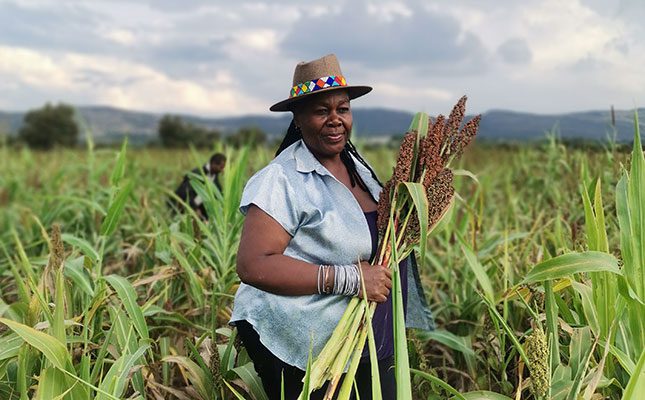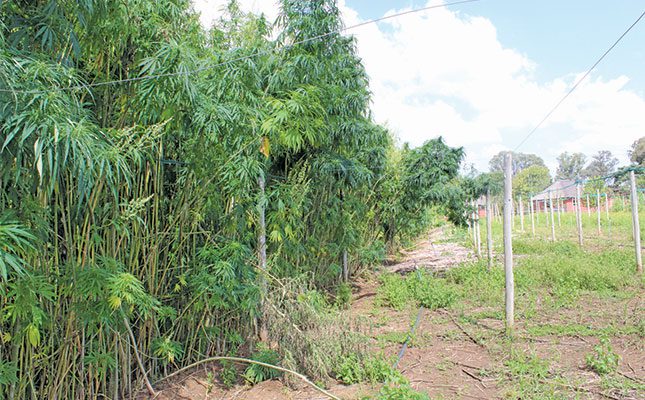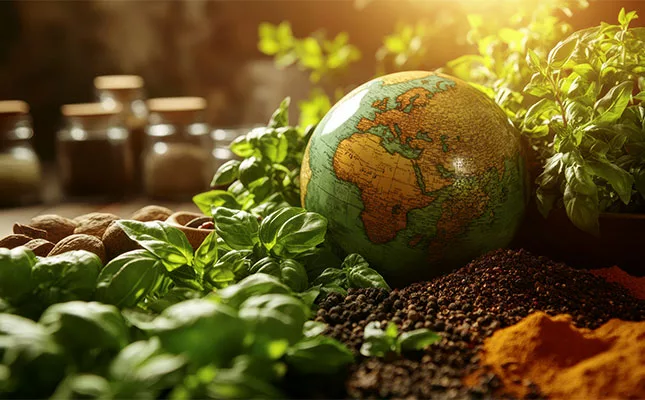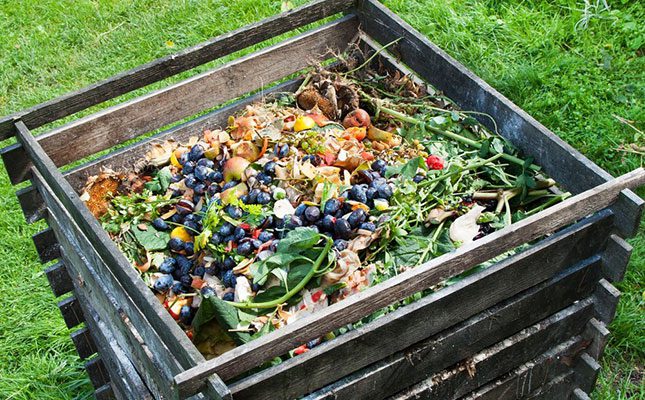
Photo: Supplied
When Siphiwe Sithole started her indigenous produce business, African Marmalade, in 2015, it was born from a sense of nostalgia.
Having grown up in the sub-tropical rural Lowveld in Mpumalanga, she was used to a wide variety of fresh, home-grown produce such as indigenous leafy greens, legumes like Bambara beans, and vegetables like African pumpkins.
It was while living in Cape Town and working in the corporate world that Sithole started yearning for the wholesome food she had grown up eating.
“I was also travelling a lot in Africa, and in places like Zambia and Tanzania, I was experiencing all this amazing, beautiful food, but it was frustrating that I couldn’t find it back home,” she laments.
Indigenous knowledge systems
Raised by her maternal great-grandmother and spending time with her paternal grandmother, Sithole was introduced at a young age to wholesome indigenous nutrition farmed in a holistic, communal manner.
She says indigenous farmers from her grandparents’ time and before harvested rainwater for irrigation through flow channels created in the mountains. They worked with an understanding of growing the right crops for their region and integrating their livestock and cropping components. They utilised diversity and ensured sustainability through practices like producing sufficient seed to plant the next crop.
Sithole’s business model is centred on harnessing the potential of these indigenous practices to generate premiums that will take producers beyond subsistence levels.
Wholesome nutrition
Thinking back to her youth, she says they were used to having just two main meals per day: the first, a wholesome, balanced meal before midday; and the second, a meal at sunset.
Nowadays, she says, people start the day with breakfast and then continue to snack their way through various junk foods and beverages like coffee, soft drinks, or energy drinks.
“You’re stuffing your body with a lot of stuff that isn’t nourishing you, so you have to snack in between,” she adds.
She says South Africa has a massive snack and convenience food industry, with many of these options devoid of minerals, vitamins, and baseline nutrients. This issues goes even further, affecting the types of fresh produce available and how it’s grown.
For example, one of the produce items Sithole rates most highly is something that seldom makes it to the supermarket, never mind the plate: pumpkin leaves. More specifically, African pumpkin leaves.
“That was one of the things I missed most. I would go to the shops and see all the other pumpkins but not the African pumpkin. And around November, I would start craving the leaves, but there were never any to be found,” she says.
Sithole explains that in commercial production, chemical pesticide and herbicide sprays make the crop leaves unsuitable for human consumption. By contrast, pumpkins farmed in a traditional homesteader manner by contrast provide much more value. The leaves are rich in iron and good for breastfeeding mothers, she says, and you can eat the flowers or use the baby pumpkins as a substitute for marrows.
She adds that African pumpkin is also prized for its long shelf life, lasting up to a year from harvest to harvest. Even the seeds are used, either as a quick protein-rich snack on the go, in salads, or ground into a powder that can be combined with other foods.
What’s in the indigenous basket?
Sithole’s ideal indigenous produce basket comprises ancient grains, legumes, leafy greens, and indigenous vegetables.
Grains like red and white sorghum, and millet (finger and pearl varieties), are healthy, versatile, and offer added production benefits like hardiness and drought tolerance. Moreover, she says these grain crops’ adaptability means they’ll also perform well under excessive rainfall that might negatively affect commercial maize or wheat varieties, with the added benefit of serving as a good feed source for livestock.
Leafy greens or morogo comprise numerous plants that ornamental gardeners often classify as weeds. These include amaranth (Amaranthus spp.), ulude or spider plant (Cleome gynandra), black-jack (Bidens pilosa) delele or jute mallow (Corchorus olitorius), and umsobo or black nightshade(Solanum retroflexum).
Another ingredient is beans, and here Sithole says South Africans are getting the short end of the stick. The selection available on most retail shelves stock common varieties like butter beans, kidney beans, black beans, and sugar beans, along with chickpeas – which are mostly imported.
“If you go to an African market in Malawi or Mozambique, you find yourself thinking ‘I didn’t realise there are so many [different types of] beans,’” she says.
Sithole says cowpeas and pigeon peas are good options, as they grow close to the ground like peanuts and don’t require staking. They’re also beneficial for cropping systems, as they fix nitrogen into the soil.
She also highlights Bambara beans as an indigenous alternative to chickpeas, linking them to the principles of conscientious living and intentional spending. These ideas tie directly into the country’s sustainability and support for local farmers.
“These options are good for the soil and environment. They’re healthy, and they are good for the economy, because they are produced locally,” she explains.
Health benefits and food culture
Sithole is an advocate for the health and nutritional benefits of indigenous foods farmed as close to nature as possible.
But her beliefs are backed by science, too. She says research conducted by the Agricultural Research Council has compared the nutritional profiles of indigenous morogo plants to conventional leafy greens like spinach, kale, Swiss chard, and cabbage.
They found that some indigenous varieties came out tops in terms of iron, calcium, and vitamin A content, among other nutrients.
In her quest to give people healthier food alternatives, Sithole has realised that much of it has to do with introducing the food to people in the first place. For that, she has embraced the foody culture that continues to trend around the globe.
“Chefs have a way of making food sexy,” she laughs.
She’s partnering with niche stockists such as those that subscribe to the slow food movement, as well as lifestyle-oriented consumers like caterers, restaurants, and hotels looking to serve authentic African cuisine.
She hopes to grow this market, as she says it’s difficult to find restaurants that offer the type of tasty wholesome fare she’s thinking of. The closest is a shisanyama-type experience. Her idea, by comparison, would be more in line with a portion of expertly prepared goat meat served with ancient grains like pearl millet or sorghum and leafy greens like amaranth and pumpkin leaves.
“I’m currently playing the advocacy role, looking into the international calendar and trying to expose the right people to our products.”
Growers growing right
Sithole doesn’t envision herself farming thousands of hectares of her own produce at commercial scale. She is at home in the field, though, and says her lack of formal agricultural education has brought the benefit of not being boxed in by textbook practices.
Her vision is to preserve the holistic homesteader traditions entrenched in indigenous crops and farming practices. She has a growing base of farmers producing for African Marmalade and continuously consults with new potential growers.
She has established a seed bank and distributes freely to those who wish to grow the crops. She keeps track, however, sending the appropriate seed varieties to different parts of the country. If there’s a problem in one province, she explains, she can draw on resources from growers she supplied elsewhere to maintain the supply.
The seeds also include fruit. Sithole talks about eating fruit like papaya and noticing the difference in flavour between the fruit she gets from a friend in Venda and the seedless varieties found on supermarket shelves.
A culture of abundance
Sithole thinks back to growing up, snacking on guavas or avocadoes from trees lining the verges on the way to school.
“We would get home late from school with our clothes stained from the berries we had picked along the way,” she says.
She reflects on the sense of abundance and how it felt to grow up knowing there was enough for everybody as opposed to the cultural scarcity experienced today.
Sithole dreams of introducing food gardens in urban areas and homes. She criticises property developers who seem to be so focused on aesthetics that their guidelines ban the growing of food crops in garden spaces. Instead, she says, they should include food garden allotments in their housing complex designs.
She believes in developing a culture where people once again grow their own food, saying this will help us become physically and socially healthier, improve our mental health, bring a sense of purpose, and unlock economic benefits.
Women are Africa’s crop producers
As South Africans celebrate Women’s Month in August, Sithole reminds all women that they have always been Africa’s crop producers. They also take responsibility for meeting the nutritional needs of their families, ensuring they have healthy, balanced diets.
“I struggle sometimes with this concept of ‘women in agriculture’, because women have always been growing crops. [Traditionally,] men focused on livestock while women took care of the crops.
She says this message now extends to parents, whether they grow their own food or shop for it: “You are the one pushing the trolley, deciding what goes into it.”
She calls women the mothers of the nation: “We grow the food; we decide what is good for our communities.”
Describing a sisterhood of women, Sithole has extended this concept through the seed collective she facilitates. “If I don’t have seeds, I can get them from my neighbour,” she explains.
This seed-sharing ideal is also central to the growers’ businesses, as it ensures sustainability of production.
“Whoever controls the seeds dictates what you eat,” concludes Sithole.
Phone Siphiwe Sithole on 072 232 1174, or email [email protected].













